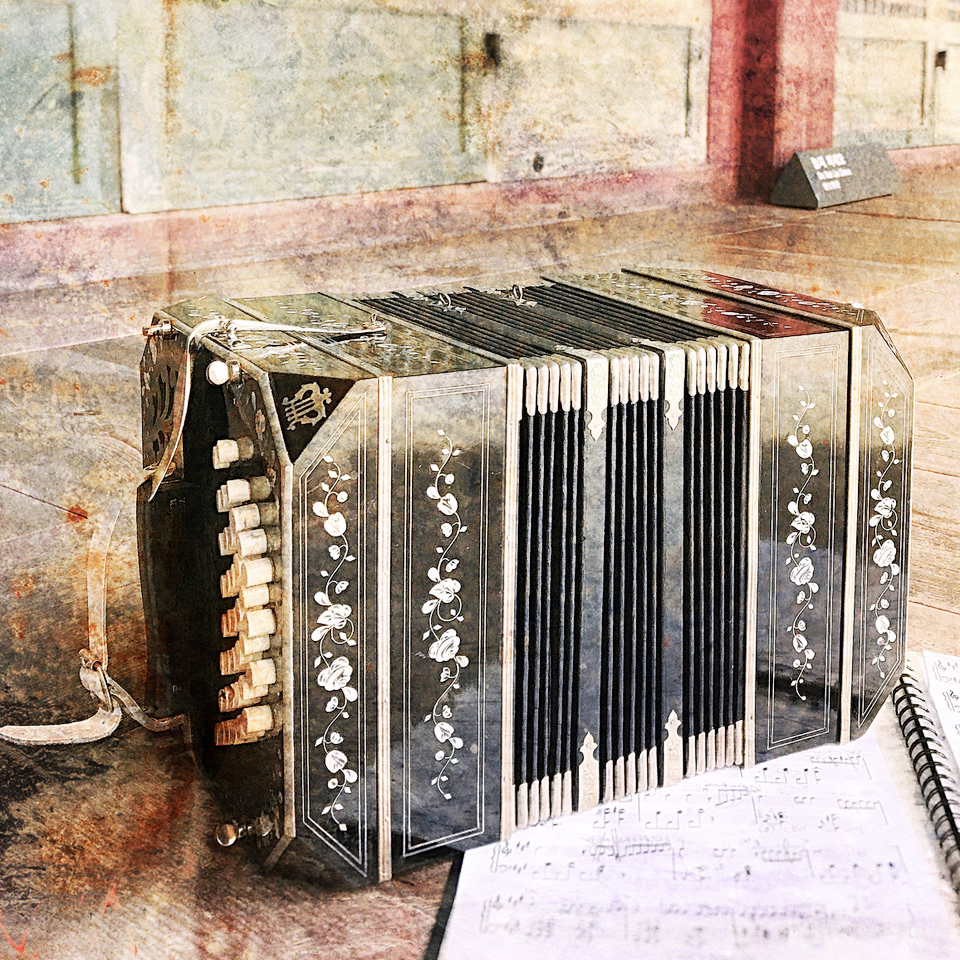About Bandoneon lessons
What is a bandoneon?
The bandoneon is a box-shaped instrument with many buttons. At first glance, it can easily be mistaken for an accordion. The two instruments do look similar and both are free-reed instruments. However, compared to the accordion, the bandoneon is smaller, and its tone is more melancholic.
What are the roots of bandoneon?
The bandoneon was invented in Germany in the mid-19th century by Heinrich Band, an instrument dealer, as a type of concertina.
Buenos Aires
In the early 20th century, many Europeans immigrated to Buenos Aires. They brought this small, portable instrument with them and played it to ease their feelings of loneliness and nostalgia.
Tango
As tango music flourished in Buenos Aires, the bandoneon became an essential part of tango ensembles, and eventually, the defining sound of the genre. Originally, the bandoneon had only a few buttons and could play simple chords. But as tango music evolved, the instrument also developed, and it eventually reached 142 reeds and 71 buttons.
Complex instrument
Because the system was expanded gradually rather than redesigned from scratch, the button layout is irregular and not arranged in a simple scale order — unlike the accordion or piano. Each button produces different notes when the bellows are pushed or pulled, and the left and right sides of the instrument are also different. It’s like having four irregular keyboards in one! This complexity earned the bandoneon the nickname “the devil’s instrument.” The system described above is the Rheinische [German] layout, which is the most common in tango. There also exists a chromatic system, where the buttons are arranged more regularly, similar to the accordion.
Is the bandoneon easy to play?
Despite its difficulty, the bandoneon is a joy to play. It’s easy to make a sound. The movement of air through the instrument feels almost meditative, and its tone is uniquely beautiful, nostalgic, and deeply emotional. The bandoneon covers nearly six octaves, offering great musical versatility. It blends wonderfully not only with tango but also with baroque or contemporary music, which is why it’s sometimes called a “portable organ.”
Yes, it may be challenging, a true “devil’s instrument”, but that’s part of its charm. Once you start learning it, you may find yourself completely enchanted by the sound of the bandoneon
Who are famous bandoneon players?
In the Netherlands, we know Carel Kraayenhof, of course, who performs the beautiful Argentine repertoire with his ensembles in an intense and emotional way. Famous bandoneon masters include Miguel Caló, 'El Pichuco' Aníbal Troilo, Astor Piazzolla, and Francisco Fiorentino.


